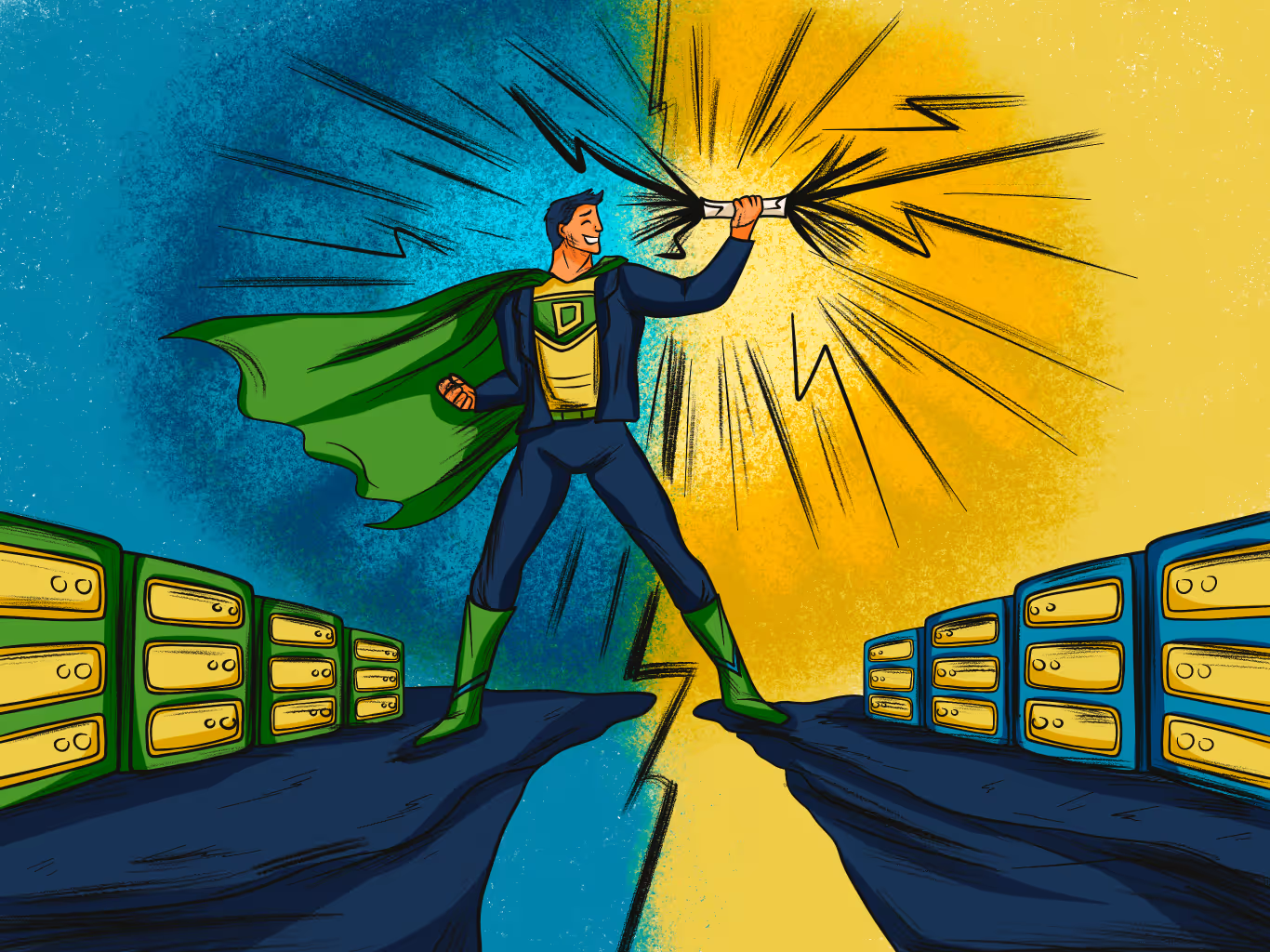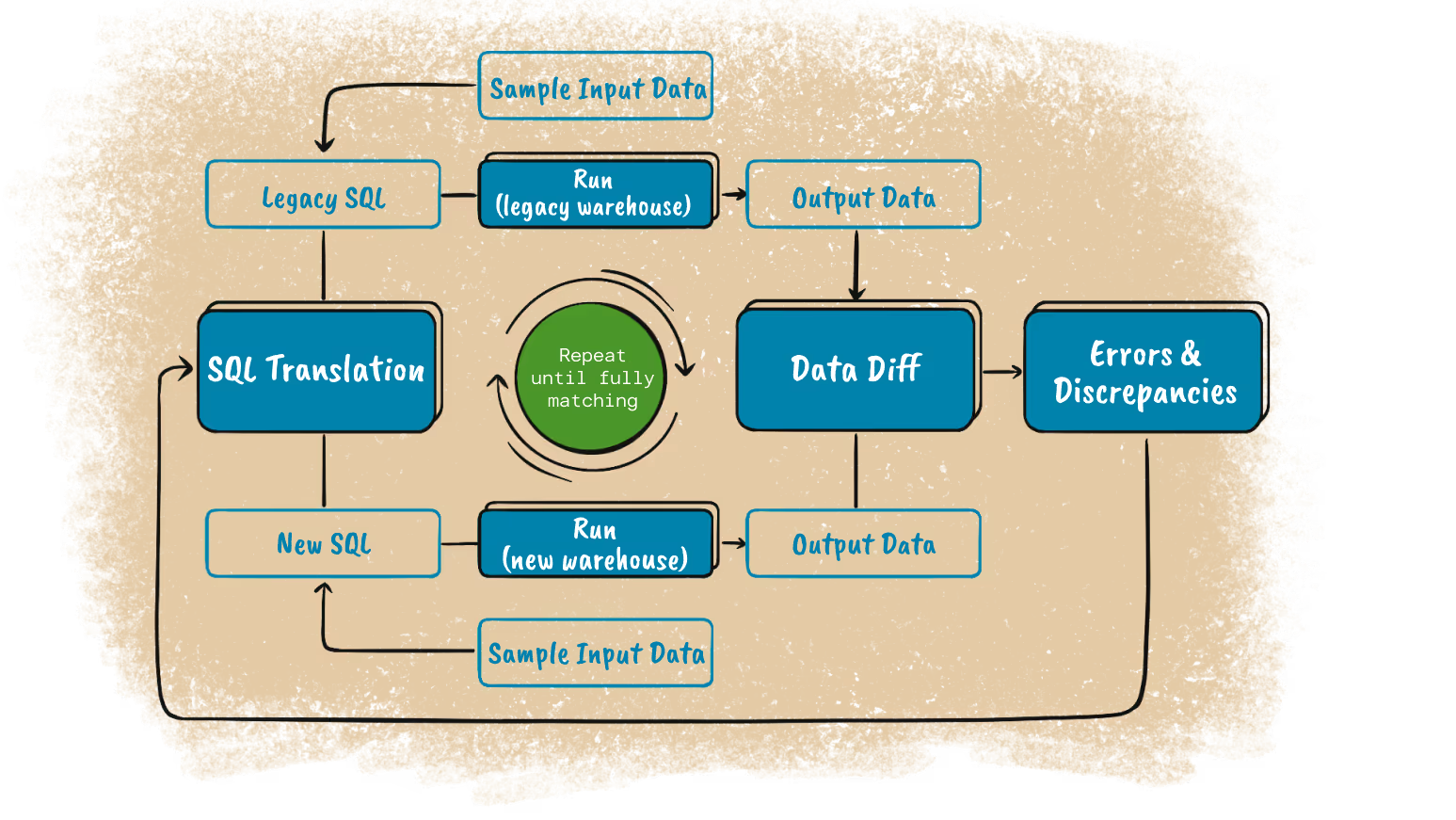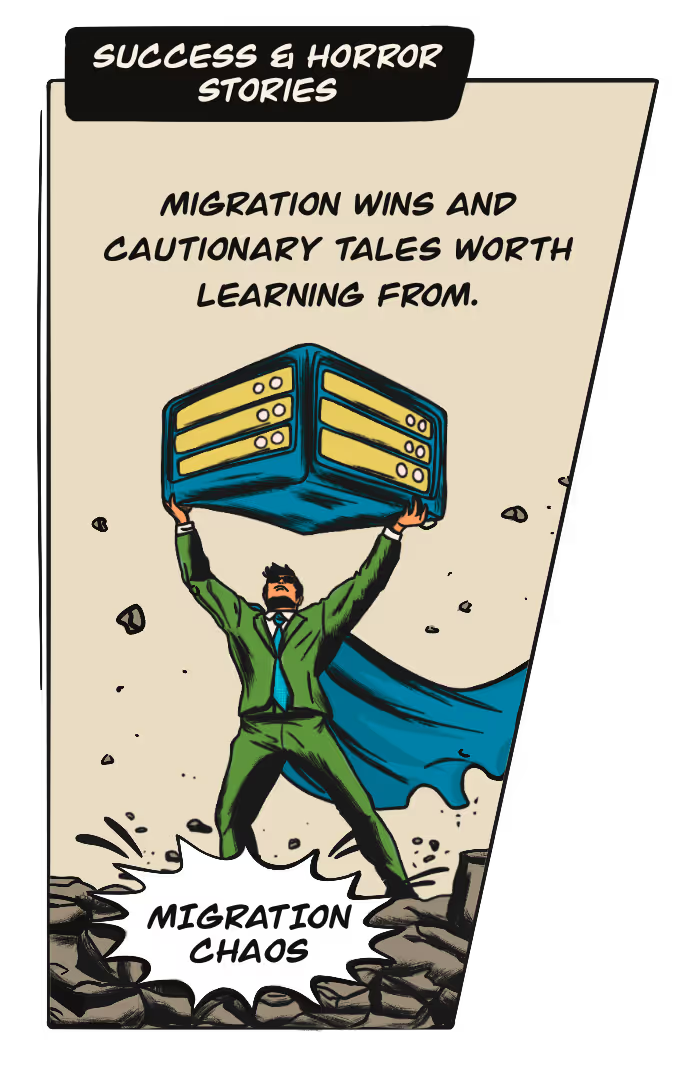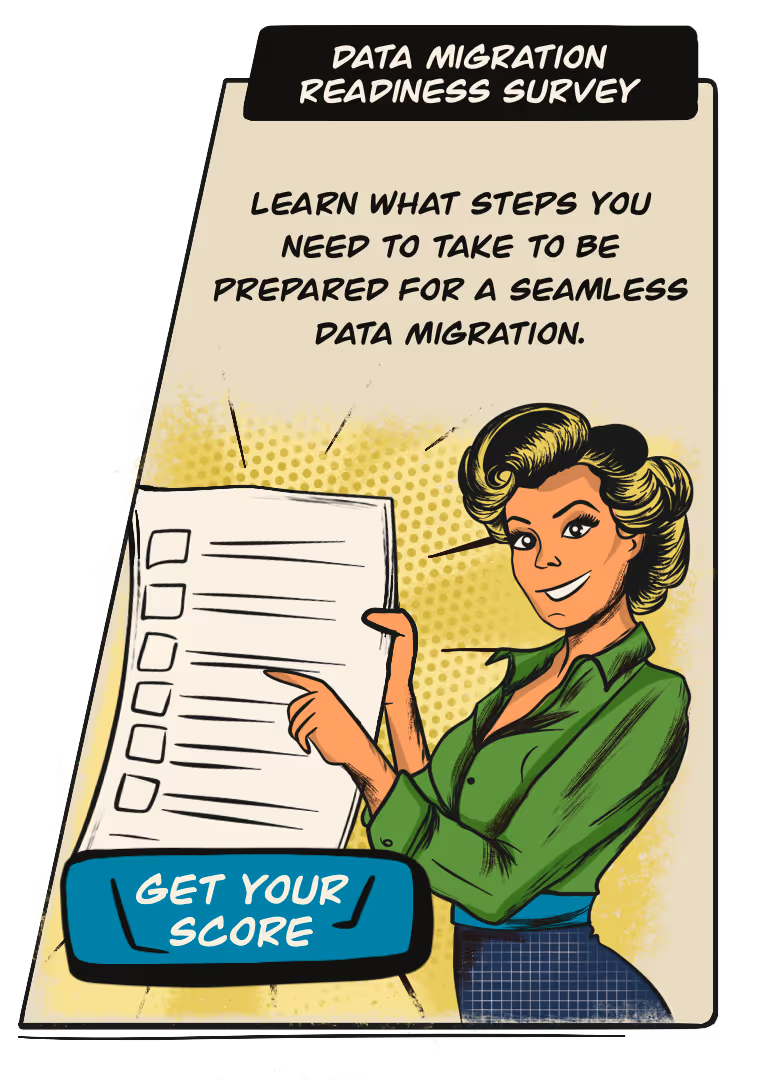Automate Code Translation and Validation
For decades, software has "eaten the world"–automating workflows, streamlining operations, and enabling teams to move faster with confidence. But data migrations? They’ve been one of the last holdouts.
Why? Anyone who has been through a data migration (and come out the other side) can tell you that migrations present the perfect storm of challenges:
- SQL dialects that don’t translate 1:1
- Edge-case business logic buried in legacy stored procedures
- Taking GUI transformations to code (oof!)
- Validation headaches when proving parity across systems with different structures and formats
That last challenge—validation—is often the hardest. Proving that the data outputs from two different systems match exactly, especially when their internal architectures and query behaviors differ, has made automatic code conversion and cross-database diffing a near-impossible task for years.
This combination of technical hurdles and real-world edge cases has made teams default to manual solutions, accepting the slow, error-prone reality of rewriting code line-by-line and validating outputs by hand.
And let’s be honest: not every automation tool has delivered on its promise. Some solutions are limited to specific platforms, many others lack flexibility for real-world edge cases, and others force you to "babysit" the automation, fixing errors manually when translations break down.

What modern migrations looks like today: Full-cycle migration automation
But here’s the shift: the tools have finally caught up, powered by advances in AI and LLMs. In the application migration space, AI is transforming the way companies modernize COBOL and legacy apps.
In the data migrations space, the AI-powered Datafold Migration Agent (DMA) is solving the long-standing challenge of cross-database validation.
DMA doesn’t just automate SQL/stored procedures/legacy code/GUI translation into the SQL dialect of your new database—it uses LLMs to continuously validate outputs between legacy and new systems, ensuring parity at both granular (row-level) and aggregate levels. (This process is called data diffing–we have a quick explainer of how it works here.)

DMA can also repackage code (while ensuring parity); for example, if a team is migrating from stored procedures on Oracle to dbt on Snowflake, DMA will automate that code translation and repackaging to dbt-compliant formatting while checking for constant parity between model outputs in Oracle and Snowflake.
What used to feel impossible is now achievable out of the box, enabling teams to automate confidently, deliver success, and ensure that no discrepancies slip through the cracks.
Translating SQL and transformation logic
Automating data migrations means conquering two interconnected villains: SQL dialect translation and transformation logic refactoring. While they appear similar on the surface, each presents unique challenges that have tripped up automation efforts for years.
SQL dialect translation
SQL may be a standardized language, but every database platform—whether Oracle, Teradata, Redshift, or Snowflake—has its own dialect. These dialects differ in:
- Syntax: Functions like
TO_CHARin Oracle may becomeTO_VARCHARin Snowflake. - Semantics: Behavior for date formats, casting, and aggregations can vary subtly but significantly.
- Optimization: Query patterns that perform well in one system can become inefficient or invalid in another.
The sheer volume of SQL code in most migrations makes this especially painful. Even minor syntax mismatches require manual rewrites, leading to:
- Human errors that disrupt production workflows post-migration.
- Time lost searching the web for obscure dialect nuances.
- Endless troubleshooting to fix "it works on one system, but not the other" issues.
SQL translation is deceptively complex. Most automated solutions could only handle basic query rewrites. The subtle variations—like differences in how dates are grouped or nulls are handled—required human oversight, breaking the promise of a fully automated solution.
For example, migrating a common query from Oracle SQL to Snowflake SQL:
Before (Oracle)
SELECT TO_CHAR(order_date, 'YYYY-MM') AS month,
COUNT(order_id) AS total_orders
FROM orders
GROUP BY TO_CHAR(order_date, 'YYYY-MM')
ORDER BY month;
After (Snowflake)
SELECT TO_VARCHAR(order_date, 'YYYY-MM') AS month,
COUNT(order_id) AS total_orders
FROM orders
GROUP BY TO_VARCHAR(order_date, 'YYYY-MM')
ORDER BY month;
Refactoring transformation logic
SQL dialect translation is only part of the battle. Legacy systems often bury complex business rules in tightly coupled stored procedures and macros. Refactoring these into modern, modular workflows—like dbt models—requires more than syntax changes.
Key challenges include:
- Tightly coupled logic: Stored procedures mix SQL transformations with procedural constructs (e.g., loops, conditionals). Unpacking this tightly coupled logic into standalone, modular transformations requires restructuring—not just translation.
- Control flow: Loops, conditional updates, and triggers in legacy systems don’t map cleanly to modern tools that prioritize declarative logic and batch processing.
- Maintainability: Translating monolithic scripts isn’t enough. The end result must be clean, modular code that aligns with modern engineering practices, like version control and CI/CD.
Legacy refactoring involves far more than swapping syntax. It requires tools to understand the intent of business logic, refactor control flow into a declarative, modular format that tools like dbt can use, and validate outputs to ensure business logic integrity.
Traditional automation tools couldn’t bridge this gap. They either failed outright on complex stored procedures or produced translations that failed upon first contact with reality, requiring manual rework.
Translating stored procedures to dbt can be exceptionally tricky, especially at scale. Since dbt abstracts much of the DDL layer (e.g., CREATE, ALTER statements), manually mapping these transformations can be time-consuming and error-prone. That’s why we recommend using the Datafold Migration Agent (DMA), which leverages LLMs to automate SQL/stored procedure/GUI/legacy code conversion—transforming legacy procedural logic into modern, modular dbt models and projects while maintaining business logic integrity and data quality.
From stumbling block to superpower

What once felt like an impossible lift—automating SQL translation and refactoring transformation logic—is now achievable with the Datafold Migration Agent.
By combining precise translation, intelligent refactoring, and built-in validation, DMA turns one of the last holdouts to automation into a powerful enabler for modern data team, enabling teams to:
- Automate translation of SQL/stored procedure/GUI and business logic with accuracy.
- Continuously validate outputs to ensure parity and trust.
- Deliver migrations faster, with fewer errors and less stress.



